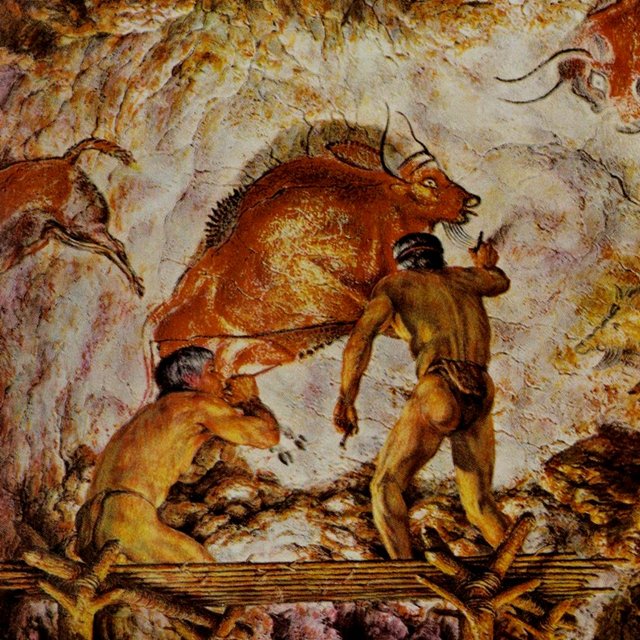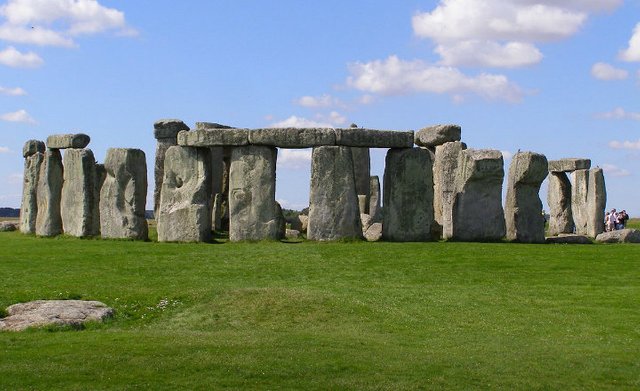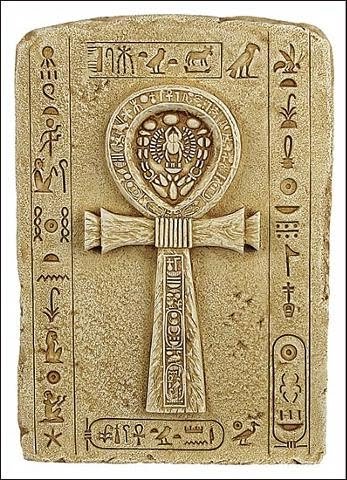Paint to hunt.
About 25,000 years ago, in the Late Paleolithic, primitive man represents on the walls of the caves the profiles of the wild animals that constituted his hunting booty. Thus, in the beginning, naturalistic compositions featuring animals predominated; later the prehistoric painters were introducing very schematized representations of human figures. At the end of the Neolithic, the appearance of the first settlements in villages led to a certain abandonment of painting in favor of sculpture, ceramics and the first architectural constructions.

Paintings.
The most beautiful cave paintings, such as those of the caves of Altamira (Spain) and Lascaux (France), date back to the Magdalenian period (20,000-10,000 a.C.) of the Palaeolithic period and belong to the so-called Franco-Cantabrian school. Painted in the most recondite areas of posts without any logical compositional nexus. The cave paintings are characterized by their accentuated naturalism, care for the details (eyes, mane, hooves) and the use of polychromy (black, red, ocher colors).

Venus in the caverns.
The most outstanding works of the Paleolithic are the female statuettes. These are characterized by the exaggerated bulging of the breasts, belly and hips, such as the Venus of Savignano, Willendorf (Austria) and Lespugue (France). These prehistoric Venus, between 5 and 25 centimeters high, date from about 28,000 years ago and are the first symbolic image of female fertility.

Architecture is born.
In the Neolithic, the first houses built (the stilt houses, wood constructions) and the first settlements, that is to say, the architecture is born. The cult that each town pays to its dead has left its mark on the oldest conserved monuments, the megaliths. The simplest is the menhir, a simple piece of stone that is placed vertically. They often have series monoliths arranged in a row or in a circle, called cromlechs (like Stonehenge, England). The most complex megalith is the dolmen, a sepulcher constituted by large vertical blocks along with other horizontal ones that form the funerary chamber.

The non-existent primitive art.
The art produced by the peoples of black Africa, Oceania and North America has been called until recently "primitive art". The artistic manifestations of such peoples, especially the statues and masks, were considered mere vestiges of remote times, when man lived in the wild and anchored in ancestral traditions. However, researchers have been banishing this overly simplifying term in favor of the term ethnological art, which allows us to encompass the artistic diversity of infinity of ethnic groups without underestimating their evident cultural development.

Primitive? No, avant-garde.
The definitive revaluation of "primitive art" took place in the first years of the 20th century, when paintings and sculptors of the European avant-gardes saw in those radical statuettes and masks the European plastic tradition. The Spanish painter Pablo Ruiz Piccaso was one of the first to be enthusiastic about primitive art. In fact, in "Las señoritas de Avignon" (1907), the painting that changed the history of Western art, we can appreciate the impact produced by Picasso on African sculptures, stylized and sometimes reduced to pure geometric volumes.

Body paint.
Along with carvings, masks and fetishes, one must consider one of the features common to all cultures: the decoration of the body. Body painting serves, among other functions, to differentiate human beings from wild animals; as a distinguishing mark of the members of a lineage or family; or to represent the social hierarchization within the group, as in the case of the Brazilian caduveo. Another significant example was the Maori women from New Zealand, who were tattooing around the mouth (lips, gums, chin), so as not to resemble animals. In addition, they thought that the tattoos rejuvenated and favored them physically.

The masks.
They are one of the most suggestive elements of ethnological art. The most common masks are the ones that cover the face, that displaying a wide formal range, are usually painted in very contrasted and violent tonalities. Among the masks that give them, people of the Republic of Côte d'Ivoire and Liberia (West Africa), they have studied up to 21 different types, from which they represent beautiful and delicate female faces to fantastic pieces in which the features of the face they are distorted by the juxtaposition of geometric volumes. The Baili matrilineal people of the Republic of Mali, south of the Sahara, make Tyiwara spirit masks / Chi Wara, the Keeper of the crops. Carved in antelope, they have the shape of a man and a woman and are used in agricultural rites to ensure fertility. On the islands of Melanesia (Oceania) there is also an immense variety of masks.

Effigies for worship.
The statues are usually part of the altars and spaces dedicated to the worship of the gods and ancestors. Among the black African peoples, these effigies tend to obey similar canons: they are anthropomorphic figures -normally in an erect, rigid and hieratic position- whose face has a severe expression. The figures of the baulé and guro (Cost of Ivory) and the Bamileké (Cameroon) are responsible for these types. However, there are also seated figures such as the stylized statues of the Dogon (Mali) and those of Fang (Gabon and Equatorial Guinea), which appear sitting on boxes made of bark. These boxes contain the skulls of the tribal chiefs.

Amulets and fetishes.
With forms similar to the statues destined to the cult of the ancestors, there are amulet figures -used as protection against dangers or diseases- and afigeres made for magical purposes. The supposed supernatural power of the latter comes from the spells that a sorcerer has performed on them, according to which they have become the transmitting object of those powers. The figures destined for evil ends are called fetishes. Above all, they are characteristics of the ethnic groups that inhabit the Zaire river basin.



Great story
Downvoting a post can decrease pending rewards and make it less visible. Common reasons:
Submit